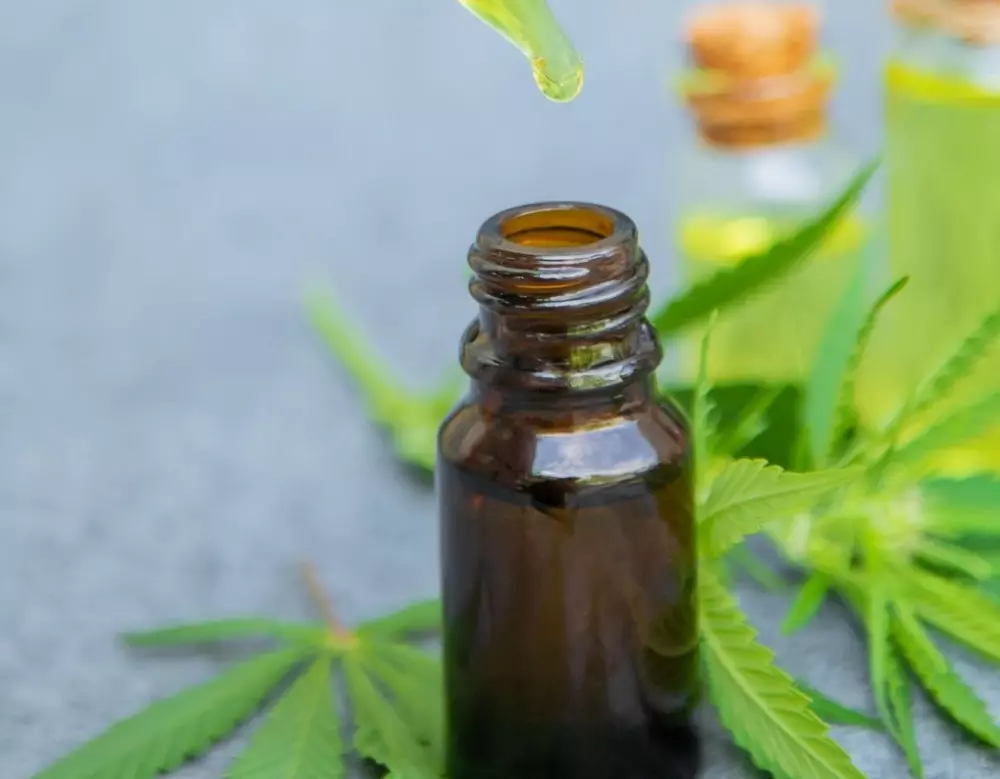The clearest way to explain a cannabis tincture is to refer to the deep roots and traditions of herbal medicine. In its simplest form, a tincture is a concentrated herbal extract made by soaking bark, berries, roots, leaves, and other plant matter in alcohol or vinegar to concentrate them into a liquid. How a cannabis tincture differs from a tincture of elderberry or turmeric is both legal and regulatory. Nonetheless, cannabis tincture is available in varying degrees of quality and efficacy throughout the U.S., especially tinctures containing the non-intoxicating cannabinoid CBD.
What is cannabis tincture?
To make a cannabis tincture, plant matter needs to soak in an alcohol base (think distilled alcohol) for several weeks. The eventual tincture has three components - cannabinoids, flavonoids, and terpenoids, all of which are important compounds that work together in what is called the entourage effect, a theory that suggests that compounds are more efficient and effective when working together and not in isolation.
Is cannabis tincture the same as cannabis oil?
Nope, not even close. Though the goal is to use both tinctures and oils for medicine or enjoyment, the extraction process and how they’re made is what sets them apart. Cannabis oil derives from an extraction process that pulls oil from the seeds, flowers, and stalks of the plant. Like tinctures, this oil contains all the goodies cannabis has to offer, like cannabinoids, terpenes, flavonoids, fatty acids, and other vitamins and minerals. However, this process also allows for terpene and cannabinoid isolation, most frequently CBD. Once extracted, the compounds are then placed in a carrier oil like hemp seed oil, coconut oil, MCT (medium-chain triglyceride) oil, or vegetable glycerin. The base oils also dilute the cannabinoid, making it easier for the body to absorb. Bioavailability By definition, bioavailability is the proportion of a drug or other substance that enters the circulation when introduced into the body and has an active effect. Greater bioavailability provides more potency and efficacy of substances. It is thought that cannabis oil has more bioavailability than tinctures, though research comparing the two formulations is scant. Shelf Life Weed tincture does become less potent over time, and will eventually expire. However, if stored properly, the alcohol in cannabis tinctures acts as a preservative and can last for many years. Be sure to keep your tincture in a cool, dark place. Cannabis oil, on the other hand, is much more sensitive and will degrade more quickly. If the liquid becomes cloudy, it’s time to throw it out. Oil should also be stored in a cool, dark place. Ingestion Method Tinctures and oils are frequently consumed sublingually (under the tongue), which increases bioavailability. If you don’t mind an earthy, cannabis-y taste, both can be added to food and drink. Sprays Cannabis tinctures can be sprayed into the mouth, most effectively on the inside of your cheek. Our mouths have a moist, inner lining that facilitates efficient delivery and may increase bioavailability. After spraying, wait a few minutes before eating or drinking. Under the Tongue (Sublingually) Sublingual ingestion involves placing a dose of oil or tincture on the mucosal lining under the tongue. Hold it under your tongue without swallowing the liquid for a minute or so. This method of ingestion is thought to provide more bioavailability. In Food and Drinks Tinctures and oils can certainly be added to food and drink but maybe better disguised in a smoothie or salad. Because the compounds enter your bloodstream through your stomach, feeling the effects of this consumption method can take anywhere from 30 minutes to two hours. Taste The taste of tinctures and oils can be somewhat disguised with added flavors, and some carrier oils taste better than others. Nonetheless, expect both tinctures and oils to have a cannabis-like taste too.
What Temperature Do I Decarb Weed For Tincture?
Before cannabinoids like THC and CBD can be unlocked, they have to undergo a process called decarboxylation, or heating to activate them. Start by breaking your weed up into small pieces (about the size of a grain of rice) and space it out evenly on a baking sheet lined with aluminum foil. Cover with another piece of foil, and place in an oven set to 225 degrees Fahrenheit. Keep them in the oven for about 45 minutes, then let them cool for an additional 30 minutes. If you smell or see burning, turn down the temperature.
What Should My Tincture Dosage Be?
Cannabis dosing is notoriously tricky and depends on many variables. The short answer is, you may have to figure out the dosage that’s right for you through trial and error. However, dosing via tincture or oil can be easier than dosing with something like an edible. Sprays can be measured per spray, and oils and tinctures that come with droppers usually have measurement indicators. Finding the appropriate dose is dictated by product potency, biology, body weight, gender, and severity of the condition you’re trying to ameliorate. The cardinal rule of cannabis applies here: start low and go slow. If you are not achieving the desired effect, gradually increase the dose until your goal is achieved. And if you’re experiencing side effects, scale back the dose. As always, if you are using cannabis tincture or oil to supplement a traditional pharmaceutical regimen, or are attempting to self-treat a condition like anxiety or sleeplessness, do so in partnership with your doctor to be sure that your cannabis medicine does not negatively interact with other prescriptions.
